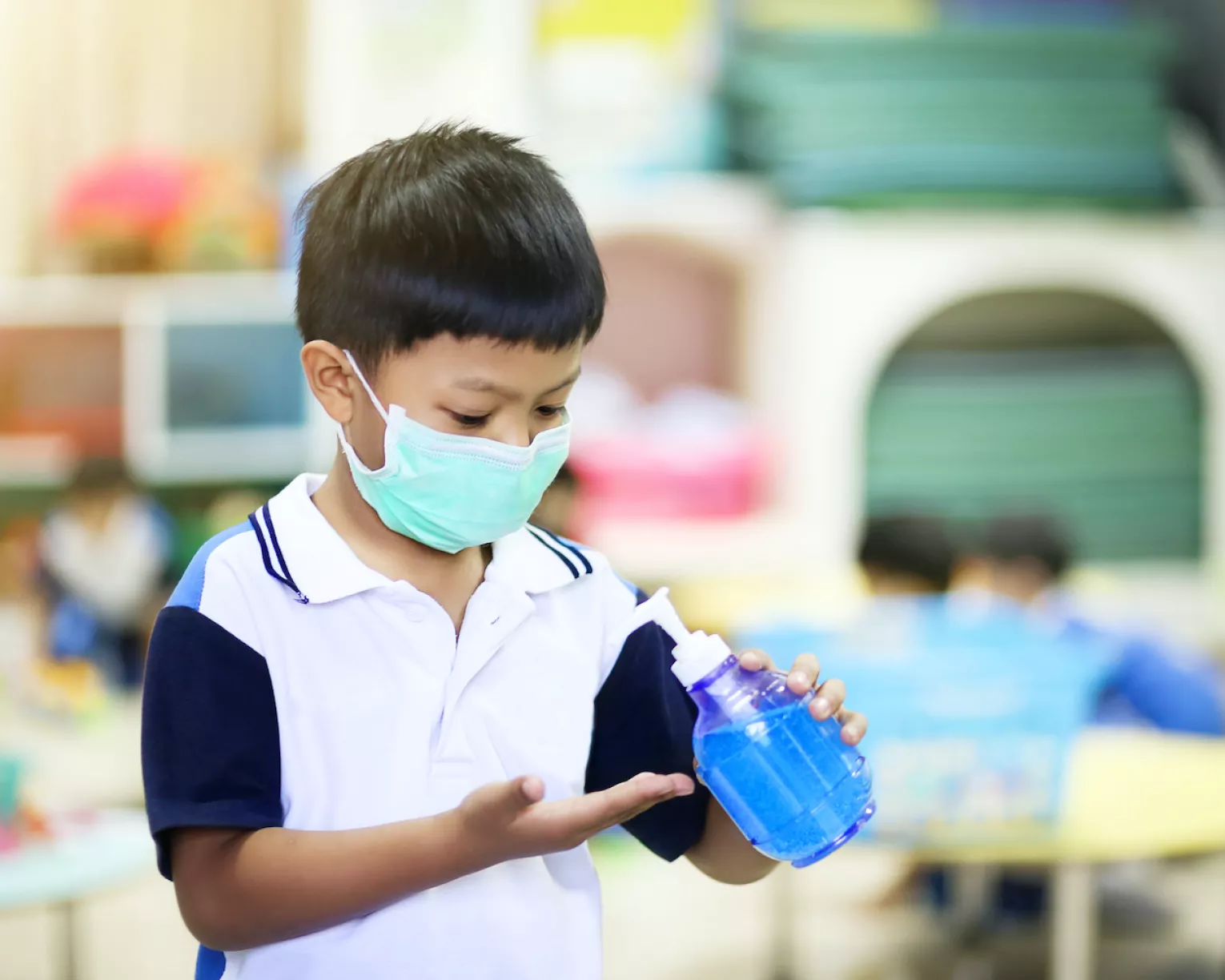KEEP AT LEAST THREE OR SIX FEET OF DISTANCE, DEPENDING ON CONTEXT AND LOCATION IN SCHOOL FACILITIES.*
Updated CDC guidance continues to call for at least six feet of distance between adults as well as between adults and students at all times in school buildings. Similarly, CDC says at least six feet should be maintained while masks cannot be worn (for example, when eating), during activities that cause heavier breathing (for example, when singing or exercising), and in common areas, such as hallways and auditoriums.
However, CDC now advises that only three feet of distance is necessary between students in many classroom settings. Elementary school students should keep at least three feet apart in classrooms, as should middle school and high school students in classrooms in areas of low, moderate, or substantial community transmission. Where transmission is high, middle and high school students should keep at least six feet apart if cohorting is not possible.
ENSURE APPROPRIATE PHYSICAL DISTANCE OF AT LEAST THREE FEET BETWEEN STUDENTS IN CLASSROOMS.*
Schools should employ strategies to maintain physical distance between classroom occupants—at least three feet between students and six feet between adults as well as between adults and students.
- Consider using larger spaces—such as cafeterias, auditoriums, outdoor space, convention centers, and recreation centers—for instruction.
- Arrange student seating to maximize distance, and mark floors indicating where desks and chairs should be placed.
- Create a seating chart and maintain the same assigned seats throughout the day.
- Remove nonessential furniture from classrooms, and separate students through other means, like partitions between desks.
- Modify learning stations and activities to limit the number of students in each group.
- Minimize the use of shared instructional materials, and clean materials after each use.
- Implement procedures that minimize student movement while in the classroom.
- Consider using cohorts to limit exposure; group students into cohorts by grade level or class to stay together all day.
MAINTAIN PHYSICAL DISTANCE OF AT LEAST SIX FEET OUTSIDE CLASSROOMS.*
Working with educators, school leaders should establish protocols to maintain physical distance of at least six feet when students and adults are outside the classroom.
- Stagger the use of communal spaces, including hallways, cafeterias, playgrounds, and restrooms. Provide physical guides, such as floor markings and wall signs, to assist with traffic and maintaining physical distance.
- Consider flexible options to serve meals, such as grab-and-go.
- Place plexiglass barriers where physical distancing is harder to maintain.
- Continue the use of virtual interactions for non-instructional events, such as meetings, professional development, etc.
- Implement distancing strategies on school buses.
For more information, review the CDC guidance and ED Handbook.
HOW TO CREATE SAFE, JUST & HEALTHY SCHOOLS
Ensuring our school communities are safe, just, and healthy places to learn not only protects us from the spread of COVID-19 but also helps us improve school conditions so that our students, educators, and staff—whether Black, brown, or white, Native or newcomer—can thrive. Together, we can advocate for the schools our students, educators, and communities deserve.
Ensuring successful physical distancing practices at schools takes all of us—students, educators, staff, and families—working together. School leaders must provide essential information about policies and resources clearly and in multiple formats and languages so that the entire school community can support its collective health and well-being. This includes all school protocols and signage.
By joining together, parents and educators can make every public school a place where all children can learn and thrive, but district and school leaders must ensure necessary changes are made to the physical environment and each student’s social, emotional, and cognitive level of development considered when establishing physical distancing protocols and policies. For techniques to help students adjust to changes in routine, check out resources from the National Center for Learning Disabilities.
Every student has the right to learn in a supportive environment. To ensure those students with disabilities who are unable to comply with physical distancing guidelines have the opportunity to learn, schools must continue to provide services consistent with a student’s individual education program (IEP) or 504 plan, as appropriate.
NEA MEMBERS: ACT NOW
Contact your state-elected officials and district leaders and demand that your school receives the necessary funding for resources to facilitate physical distancing as well as make structural and operational changes to allow for distancing.
Discuss appropriate enforcement strategies with school leaders, ensuring practices do not disproportionately punish students in under-resourced communities, heighten the loss of opportunity to learn, and perpetuate the school-to-prison pipeline.
Request local policies to enforce physical distancing in the community to prevent community spread from impacting schools. CDC advises that safe in-person learning should be prioritized over nonessential businesses and gatherings within a community.
Share this guidance with your fellow educators and school leaders.
*Based on CDC guidance and ED Handbook. As of March 19, 2021, the ED Handbook had not been updated to correspond with the updates to the CDC guidance.
Join Our Movement


